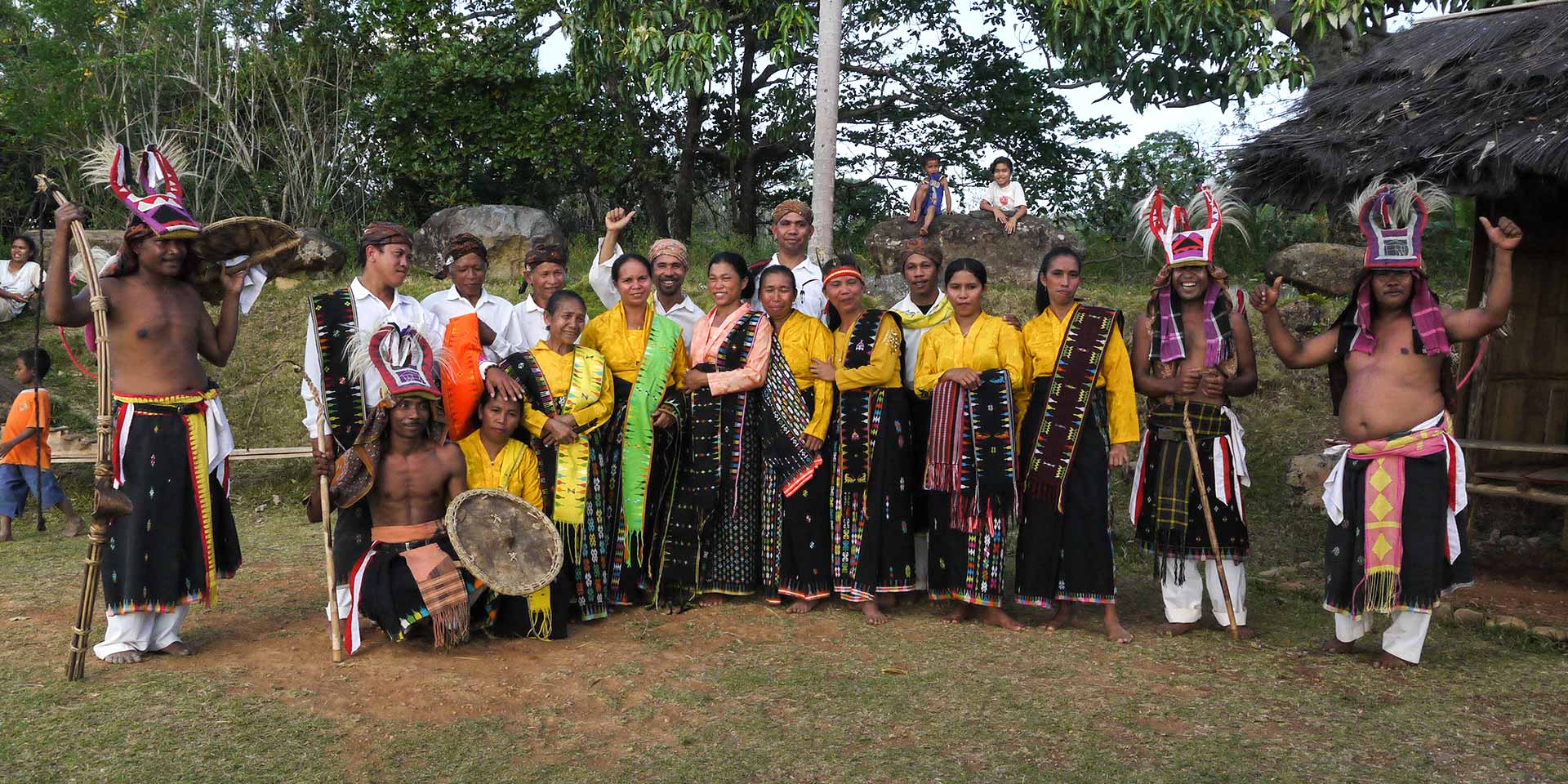
Flores itself has long enchanted visitors. The Portuguese first sent traders and friars to this small Indonesian island back in the 1500’s. The Dutch eventually followed, buying Flores for 200,000 Florins from the Portuguese around 1850. The Japanese stepped in just before World War II broke out. And finally, as if these invasions weren’t enough, Flores dominated world headlines in the early 1990’s when a huge earthquake of 7.8 on the Richter scale killed over 2,500 people

Most visitors to Labuan Bajo, the gateway to Komodo island, will immediately get on a live-aboard schooner, or plan their activities around seeing the Komodo Dragons and the diving in the amazing reefs that wind their way throughout the area. And for good reason: these are some of the most rewarding activites in Indonesia. Indeed, the main reason for my trip to Flores was to experience all of the above. However, once arrived in Labuan Bajo, we instead headed forty-five minutes out of town to the small village of Melo to experience a bit of Flores’ unique culture. I must admit, when I first heard our plans, I was concerned it would be “touristy” and thus not something I really would enjoy. I do my very best to seek out authentic experiences and fake cultural shows are simply not my thing.
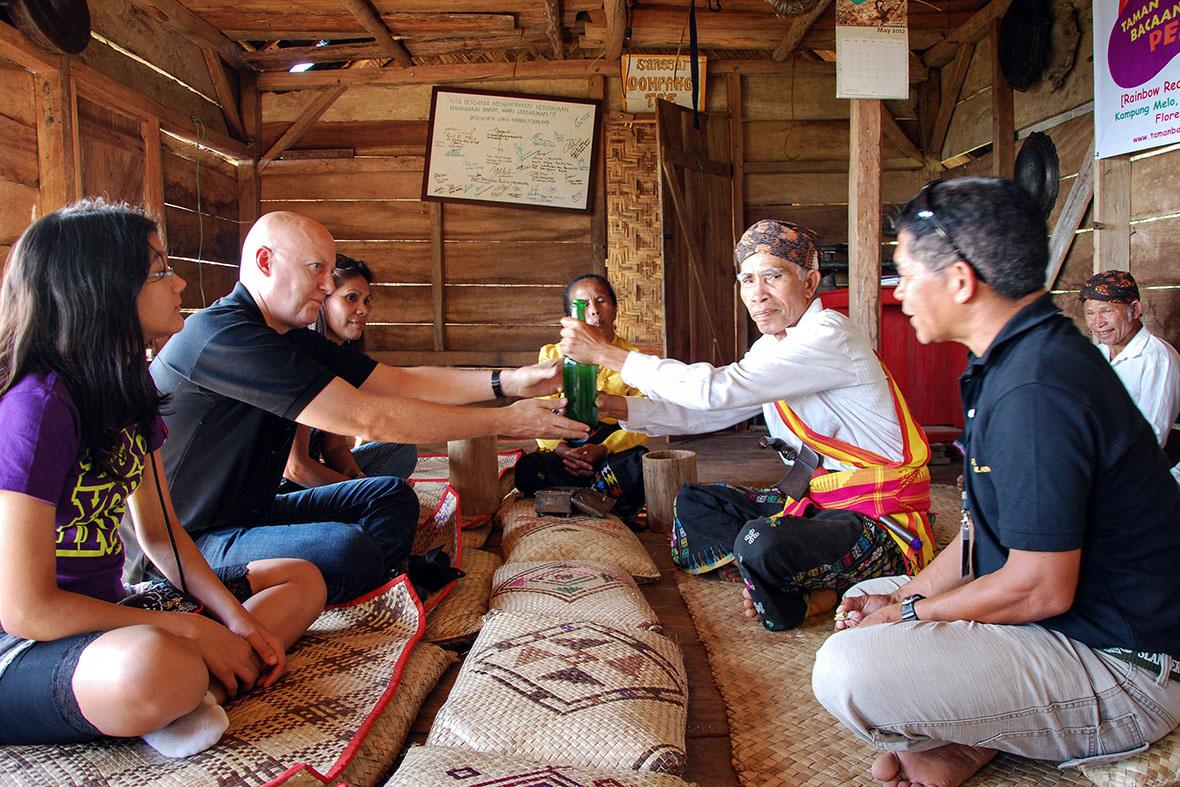
Much to my surprise, the village had prepared a festival just for me. Private to myself, my family, and our guide, the event was a wonderful experience that didn’t feel at all contrived. Upon arrival in the village, we were greeted and escorted to the home of the village headman. My family and I sat in front of him, as he began to perform a welcome ritual. I was given rice wine to drink, and betel nut to chew – tasks which I performed dutifully. The entire village was there to greet us.
Next, we were treated to a Caci performance. Caci involves two men with whips and bamboo shields jumping, spinning and trying to fake the other out in an attempt to strike the opponent. The performance is engaging and dramatic, and seeing it first-hand was a truly memorable experience for me.
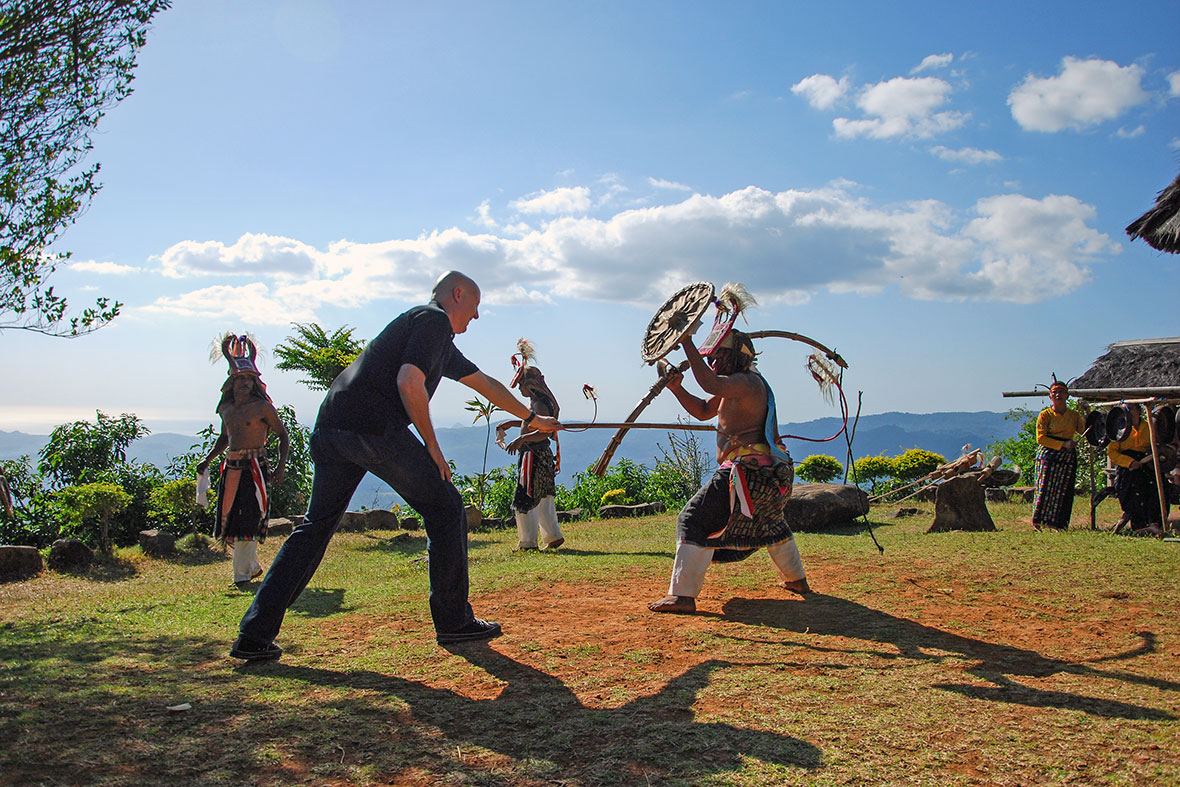
What I didn’t realize was that I would become a part of the evening’s entertainment. In Flores, custom says the guest goes first. Without really knowing what was going on, I was handed a whip and told to strike one of the villagers. I gave it my best shot and struck my opponent, but it was quite obvious that this other man had let me hit him – a kind gesture, I suppose. It was probably for the best, for as the afternoon wore on, I observed that my strike didn’t have half the force of what I would soon see from the others, who had the benefit of years of skill and experience on their side.
As the performance continued, about a dozen men began dancing around in a circle, with live music from the village musicians between each match. Manggarai cultural identity is important to these people and the Caci ritual plays an important role in that. I learned that this kind of fighting was usually performed between men from different villages. The equipment used was meant to symbolize a male phallus (the handle of the whip). The defender usually sports and round shield and this is a symbol of the female’s womb, as well as Mother Earth.
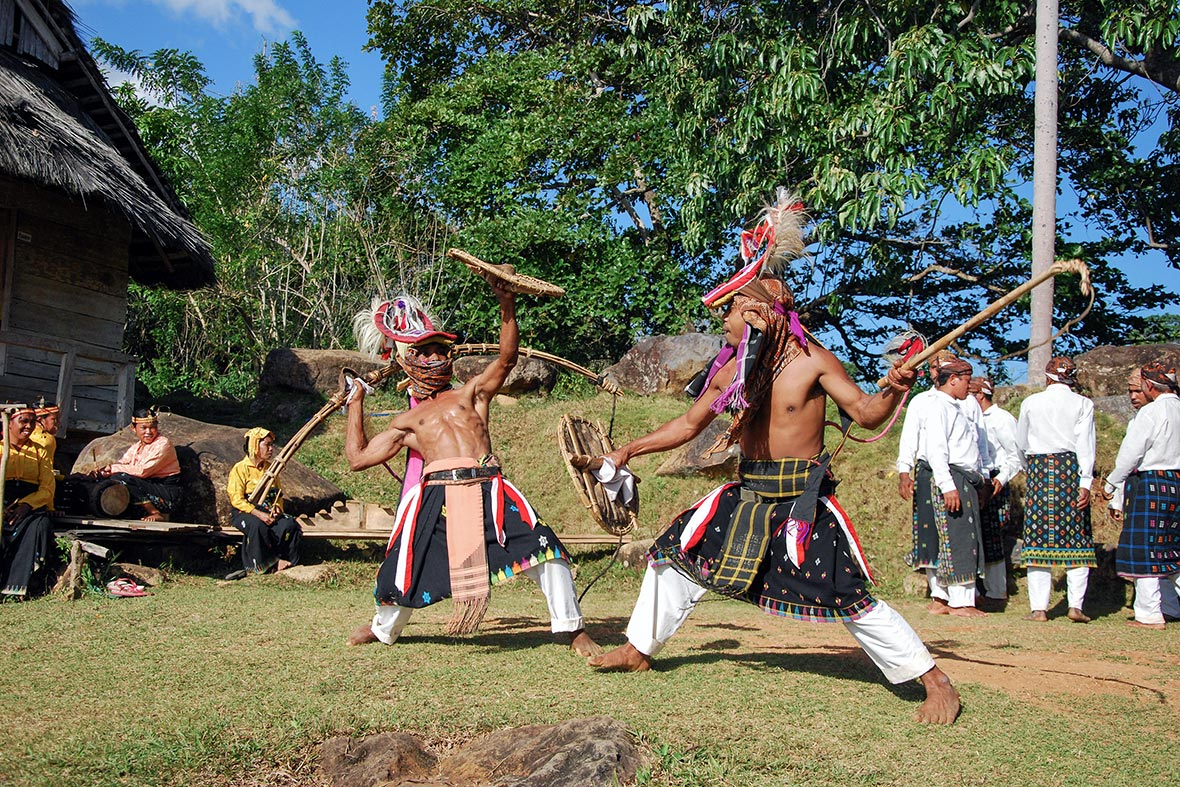
Sometimes the players wear masks, their heads rimmed by horns, symbolizing the strength of the water buffalo. In some parts of Indonesia, the water buffalo is seen as a measure of great wealth. Bells attached to their ankles, the men are expected to show their courage by going bare chested, exposing themselves to the sting of the whip’s lash.
Sportsmanship and basic decency are a part of the game. Hits to the face and head are strictly forbidden, with the offender receiving an automatic loss. Hits to the back are applauded, and indeed are seen to indicate a prosperous approaching harvest. The event takes place during Penti, the time between the old and new harvest, and the idea is to bless the upcoming harvest.
Strokes of the whip are said to appease the gods, and any blood drawn is meant as an offering to the gods, in exchange for the protection and prosperity of the clan. These games can last three days and are augmented by drums and gongs.
The role of the Caci today is varied. Many see it as a way they can carry out duties to their ancestors. Others find it an effective way of resolving disputes and conflicts. The dance is also used to prove one’s virility and manhood. Finally, Caci is performed at certain funerals, at births and marriages. Some criticism has been leveled at Caci rituals performed “on demand” for tourists out of season and not as a part of the broader cultural context. This is seen as inauthentic. But understandably, most tourists don’t want to watch the Caci performing their rituals for an entire day or even longer.
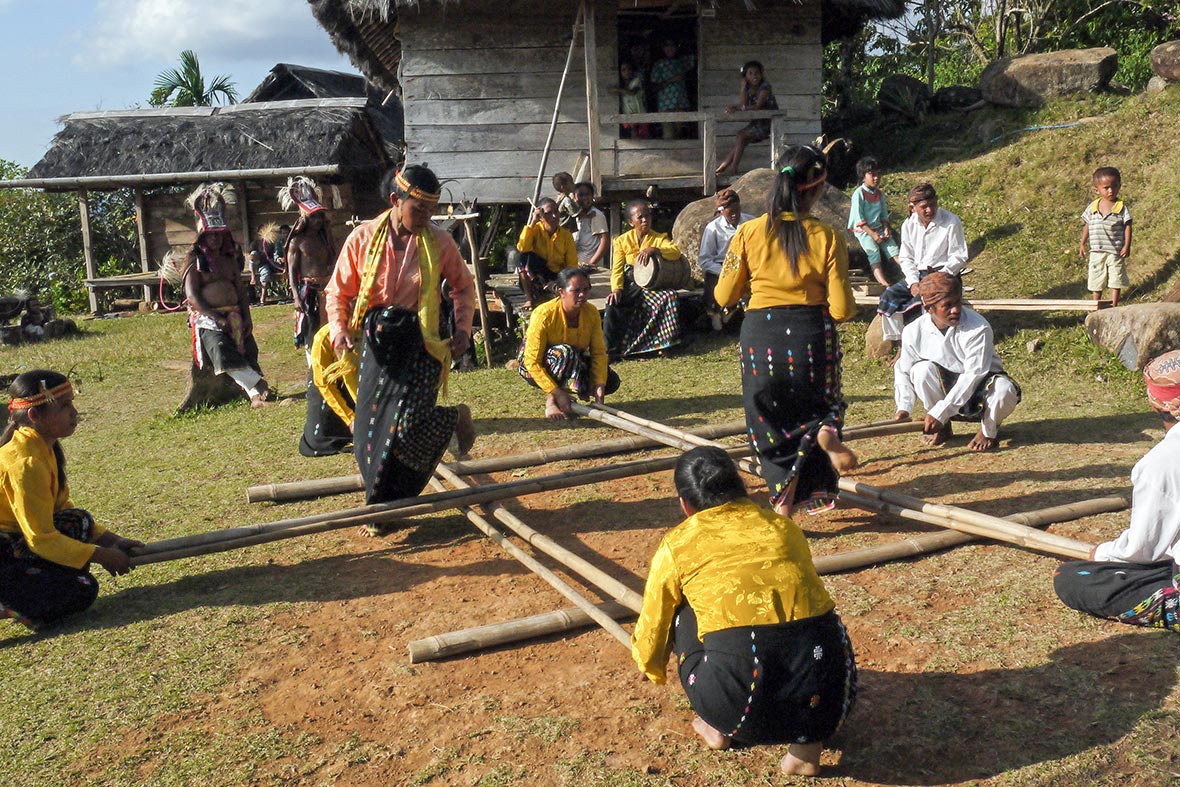
Once the Caci was completed, the women took to the stage, performing a dance involving bamboo poles. It began slowly and built into quite a frenzy, transforming into a spirited and vibrant dance. My wife drawn into the circle, encouraged by the tribal members, and gave it her best shot. The dances performed by the women have authentic names like the “Tetek Alu” and the “Ndundu Dake” dance.

The whole village was extremely friendly and we had plenty of opportunity to joke around with them as well. It was a great way to experience traditional culture on Flores before setting our sites on the Komodo Dragons and snorkeling in what was to become one of my favorite destinations in Asia.



